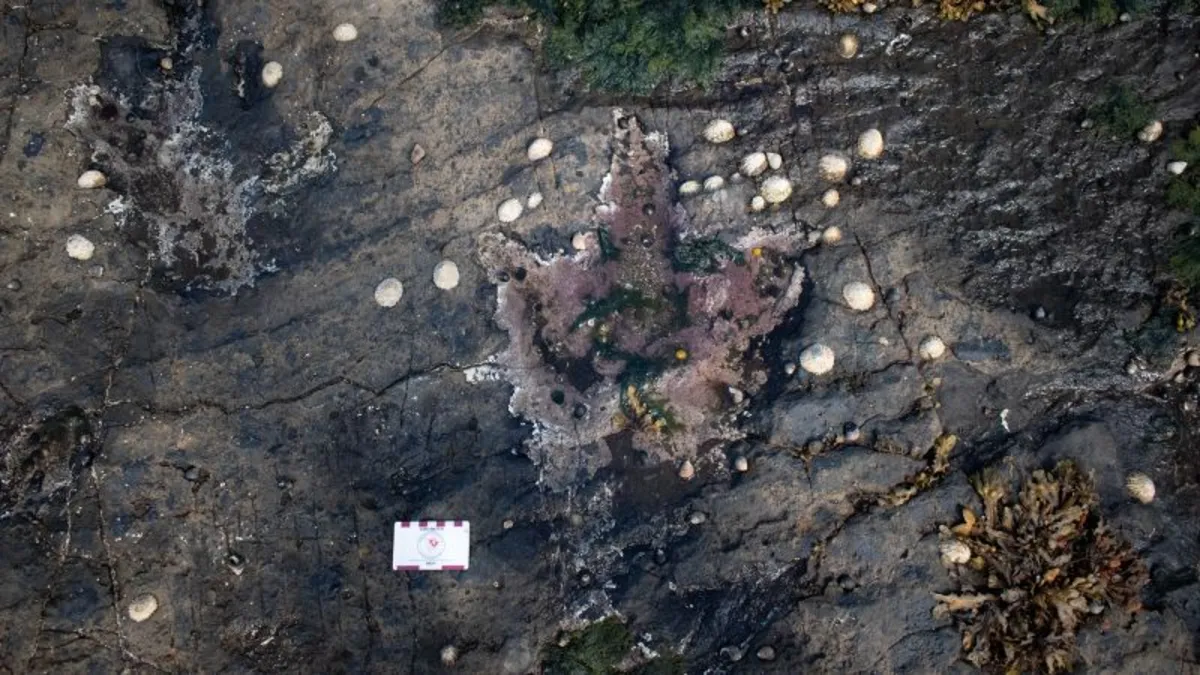
Sign up for CNN’s Wonder Theory science newsletter to explore the universe with captivating news on scientific discoveries, advancements, and more. Recent research has unveiled intriguing insights into the lives of Tyrannosaurus rex ancestors and their plant-eating dinosaur prey, suggesting that these majestic creatures gathered to drink from a lagoon in what is now Scotland.
Despite being carnivorous hunters, the megalosaurs would have coexisted with long-necked sauropods approximately 167 million years ago. Newly identified footprints indicate that both types of dinosaur frequented the edges of the lagoon, reminiscent of modern-day animals congregating at watering holes. Researchers from the University of Edinburgh have shed light on this fascinating behavior.
Lead study author Tone Blakesley, a Masters graduate at the University of Edinburgh, was part of a small team that first recognized three footprints at a remote site on the Isle of Skye’s Trotternish Peninsula back in 2019. Blakesley expressed his excitement, stating, “It was very exciting.” Since then, he has documented a total of 131 footprints for this groundbreaking study, employing drone technology to capture thousands of overlapping images for the creation of detailed digital 3D models using specialized software.
Initially, the footprints were mistaken for fish resting burrows due to their flatness. According to Blakesley, this misidentification arose from a thin layer of sand covering a harder layer of mud, which resulted in only shallow indentations. However, the footprints are now preserved in exquisite detail, offering a unique glimpse into the past.
Dating back to the Middle Jurassic period, a crucial era in dinosaur evolution, these footprints were formed during a time when little rock remains exist. Blakesley explains that the site in northern Scotland provides invaluable insights into the life of dinosaurs during this period. Contrary to the cold and blustery weather of Skye today, the area would have boasted a warm and humid subtropical climate, complete with lagoons along a vast river estuary.
Blakesley describes the sauropods as “big lumbering giants” that would have “plodded along” the lagoon. By analyzing the spacing of the footprints, he estimates that these creatures moved at speeds of around 2.5 kilometers per hour (1.55 miles per hour), which is notably slower than the average human walking speed. Utilizing their long necks, these dinosaurs would have fed on the foliage from the tops of conifers and other trees.
The megalosaurs, described as “jeep-sized” theropods, would have traversed the lagoon more swiftly, traveling at speeds of approximately 8 kilometers per hour (5 miles per hour) in search of prey or to find shelter and rest. Blakesley reflects on the surreal nature of this environment, stating, “It would have been quite a surreal place to stand in.”
While the evidence suggests that the dinosaurs inhabited the same area during the same time, the footprints do not indicate any interactions at the lagoon. Blakesley warns that such interactions would have posed significant risks for the sauropods, as “the temptation for lunch… would have been too much for the theropods.”
Blakesley continues his work at the site and recently discovered more dinosaur footprints last Tuesday. He confidently states, “There’s more footprints to find,” adding that he is also exploring other dinosaur track sites on Skye and in southern England. This ongoing research promises to deepen our understanding of these ancient creatures and their environment.